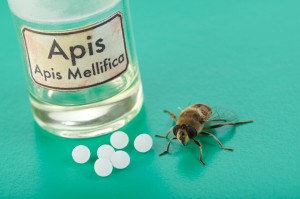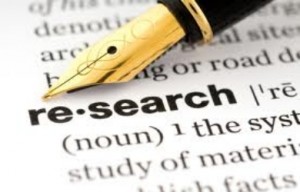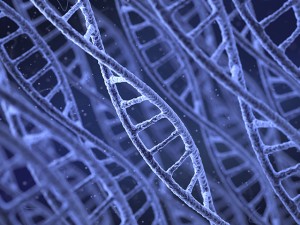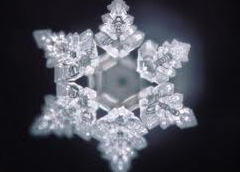Homeopathy is a System of Natural Medicine based
upon the Ancient Principle of like cures like:
Homeopathic remedies are made from plant, animal and mineral sources. When taken in a toxic amount, this same substance would cause a certain set of symptoms: physical, as well as mental and emotional. Homeopathic remedies, are these original substances, which have been diluted and shaken or ‘potentized’ into a minute-dose, which stimulates the body’s own immune system against this same set of symptoms — ‘like cures like.’
Like Cures Like
- Homeos meaning “similar”
- Pathos meaning “suffering”
This infinitesimal dose is what makes Homeopathy so safe, effective and gentle; helping the body to help itself. Homeopathy is truly a Science of Medicine – Our knowledge of what each medicine may be used to treat is based on over 200 years of double-blind, controlled studies of each substance given to groups of healthy individuals. There are over 4000 proven Homeopathic remedies to date.
Each remedy is in and of itself, like an individual.
The set of symptoms associated with each remedy creates a constellation, or a portrait of a person.
Example:
Everyone is familiar with the symptoms of a bee sting by the common Honeybee, (known as Apis mellifica in Homeopathy), with it’s accompanying hot angry swelling, itching, and redness. The pains are burning and stinging in character, made worse by heat and touch. Some people may even experience an anaphylactic response such as sudden, puffy swelling around the eyes, face, mouth or throat.
The Homeopathic preparation of Apis mellifica may be used to treat similar symptoms. Apis mellifica may be used to treat bites, stings, allergic reactions, hot red swelling, sore throat, urinary retention, hives and headaches. Homeopathic treatment is highly individualized and based on the mental characteristics and physical symptoms of the patient. Patients for whom Apis mellifica may be prescribed are often short-tempered, restless, impatient, irritable and difficult to please. When these mental symptoms are in conjunction with burning, stinging pain, inflammation and swelling, the patient is often a good candidate for Apis mellifica.
The Classical Homeopath
The Classical Homeopath seeks to carefully match the patient with his or her very own unique Constitutional remedy. Through a careful and detailed examination of the patient’s physical, emotional, mental and spiritual ‘make-up,’ the Classical Homeopath thoroughly examines and considers the best match of a Homeopathic remedy to the patient, based on the Initial appointment and subsequent Follow-up appointments. In Classical Homeopathy, one remedy is usually given at a time.
In this way Homeopathy is truly holistic, treating the whole person – mentally, emotionally and spiritually, as well as physically.
The concept of life force energy or vitality is an important one in Homeopathy.
Hahnemann named this energy the “Vital Force” similar to the concept of “Chi” meaning life-force in Eastern Medicine, or “Prana” meaning vital-energy in Ayurveda or Yoga.
Dr. Hahnemann maintained that this “Vital Force” constantly seeks to maintain a dynamic balance.
Symptoms, no matter how uncomfortable or unpleasant, are always the body attempting to restore itself to health.
Is it safe?
How Homeopathic Remedies are Discovered
The knowledge of Homeopathic remedies is based on Scientific experiments called “provings.” In a proving, healthy volunteers are given Homeopathically prepared doses of a substance until they began to “prove” the remedy, or experience symptoms – mental, emotional as well as physical.
This information is carefully recorded and repeated many times. The information from these provings, as well as documented cured symptoms, make up our Homeopathic Materia Medica; a description of symptoms caused by each substance and therefore the symptoms that remedy can be used to alleviate. Homeopathic remedies today are made according to these Homeopathic Pharmacological principles and in accordance with the United States Food and Drug Administration. The remedies are made from natural Substances — plant, animal and mineral. They are considered to be very safe, available over-the-counter and completely non-toxic. Each Homeopathic remedy bears a National Drug Code number ensuring the consumer that the product has been made in accordance with The Homeopathic Pharmacopeia of the United States. Because Homeopathic remedies are in such minute-doses, physicians and scientists frequently assert that they cannot work. An increasing number of controlled studies are proving them wrong. There are many Scientific studies on Homeopathic medicine indicating its effectiveness. There are studies published in respected scientific journals such as The Lancet and The British Medical Journal.
The Lancet Study
The Lancet published the most significant and comprehensive review of Homeopathic research, which appeared in its September 20, 1997 issue. This article was a meta-analysis of 89 double-blinded, randomized, placebo-controlled clinical trials. The authors conclude that the clinical effects of Homeopathic medicines are not simply the results of placebo. The researchers uncovered 186 studies, 119 of which were double-blind and/or randomized placebo-control trials, and 89 of which met predefined criteria for inclusion into a pooled meta-analysis. The researchers found that by pooling the 89 trials together that Homeopathic medicines had a 2.45 times greater effect than placebo.
–Dana Ullman, M.P.H.
Quantum Medicine
It is commonly assumed that Homeopathic medicines are composed of extremely small doses of medicinal substances. And yet, does anyone refer to an atomic bomb as an extremely small dose of a bomb? In actual fact, there is a power, a very real power, in having atoms smash against each other.
Homeopathic medicines are made through a specific pharmacological process of dilution and vigorous shaking. However, when skeptics say that there is nothing but water in Homeopathic medicine, they are proving their ignorance, despite the incredible arrogance in which they make these assertions. Dr. Martin Chaplin, a respected British professor who is one of the world’s experts on water, has verified that “Homeopathic water” and “regular water” are not the same, and his review of almost 2,000 references to the scientific literature on water (!) confirm this fact (Chaplin, 2009).
It should be noted that a large number of Homeopathic medicines sold in health food stores and pharmacies are made in doses with known physiological doses. In fact, there are several thousand (!) studies in conventional scientific journals showing a wide variety of biological effects from extremely small doses of various substances on specific systems.
Homeopathic medicines can and should be considered to be a type of “nano-pharmacology” (Ullman, 2006). Although the word “nano” also means one-billionth of a size, that is not its only definition. In fact, “nano” derives from the word “dwarf,” and “nano” is the only word in the English language that is used on common parlance as denoting extremely small AND yet extremely powerful.
Homeopathic medicines are both extremely small in dose and yet extremely powerful in their therapeutic effect.
For 200 years now, millions of physicians and hundreds of millions of Homeopathic patients have observed and experienced the power and effectiveness of Homeopathic medicines.
The Power of Nano-doses
Precisely how Homeopathic medicines work remains a mystery, and yet, nature is replete with mysteries and with numerous striking examples of the power of extremely small doses.
For instance, it is commonly known that a certain species of moth can smell pheromones of its own species up to two miles away. It is no simple coincidence that species only sense pheromones from those in the same species who emit them (akin to the Homeopathic principle of similars), as though they have developed exquisite and specific receptor sites for what they need to propagate their species.
Likewise, sharks are known to sense blood in the water at distances, and when one considers the volume of water in the ocean, it becomes obvious that sharks, like all living creatures, develop extreme hypersensitivity for whatever will help ensure their survival.
That living organisms have some truly remarkable sensitivities is no controversy. The challenging question that remains is: How does the medicine become imprinted into the water and how does the Homeopathic process of dilution with succussion increase the medicine’s power? Although we do not know precisely the answer to this question, some new research may help point the way.
The newest and most intriguing way to explain how Homeopathic medicines may work derives from some sophisticated modern technology. Scientists at several Universities and hospitals in France and Belgium have discovered that the vigorous shaking of the water in glass bottles causes extremely small amounts of silica fragments or chips to fall into the water (Demangeat, et al., 2004).
Perhaps these silica chips may help to store the information in the water, with each medicine that is initially placed in the water, creating its own pharmacological effect. In any case, each medicinal substance will interact with the silica fragments in its own idiosyncratic way, thereby changing the nature and structure of water accordingly.
Furthermore, the micro-bubbles and the nano-bubbles that are caused by the shaking may burst and thereby produce micro-environments of higher temperature and pressure. Several studies by chemists and physicists have revealed increased release of heat from water in which Homeopathic medicines are prepared, even when the repeated process of dilutions should suggest that there are no molecules remaining of the original medicinal substance (Elia and Niccoli, 1999; Elia, et al., 2004; Rey, 2003).
Also, a group of highly respected scientists have confirmed that the vigorous shaking involved with making Homeopathic medicines changes the pressure in the water, akin to water being at 10,000 feet in altitude (Roy, et al., 2005). These scientists have shown how the Homeopathic process of using double-distilled water and then diluting and shaking the medicine in a sequential fashion changes the structure of water.
One metaphor that may help us understand how and why extremely small doses of medicinal agents may work derives from present knowledge of modern submarine radio communications. Normal radio waves simply do not penetrate water, so submarines must use an extremely low-frequency radio wave. The radio waves used by submarines to penetrate water are so low that a single wavelength is typically several miles long!
If one considers that the human body is 70-80 percent water, perhaps the best way to provide pharmacological information to the body and into inter-cellular fluids is with nano-doses. Like the extremely low-frequency radio waves, it may be necessary to use extremely low (and activated) doses for a person to receive the medicinal effect.
It is important to understand that nano-pharmacological doses will not have any effect unless the person is hypersensitive to the specific medicinal substance. Hypersensitivity is created when there is some type of resonance between the medicine and the person. Because the system of Homeopathy bases its selection of the medicine on its ability to cause in overdose the similar symptoms that the sick person is experiencing, Homeopathy’s principle of similars is simply a practical method of finding the substance to which a person is hypersensitive.
The Homeopathic principle of similars makes further sense when one considers that modern physiologists and pathologists recognize that disease is not simply the result of breakdown or surrender of the body, but that symptoms are instead representative of the body’s efforts to fight infection or adapt to stress.
Using a nano-dose that is able to penetrate deeply into the body and that is specifically chosen for its ability to mimic the symptoms helps to initiate a profound healing process. It is also important to highlight the fact that a Homeopathic medicine is not simply chosen for its ability to cause a similar disease, but for its ability to cause a similar syndrome of symptoms of disease, of which the specific localized disease is a part. By understanding that the human body is a complex organism that creates a wide variety of physical and psychological symptoms, Homeopaths acknowledge biological complexity and have a system of treatment to address it effectively.
Although no one knows precisely how Homeopathic medicines initiate the healing process, we have more than 200-years of evidence from hundreds of thousands of clinicians and tens of millions of patients that these medicines have powerful effects. One cannot help but anticipate the veritable treasure trove of knowledge that further research in Homeopathy and nano-pharmacology will bring.
Nobel Prize-winning Scientist on Homeopathy…
Brian Josephson, Ph.D., (1940-) is a British physicist who won a Nobel Prize in Physics in 1973 for work he completed when he was only 22-years old. He is currently a professor at the University of Cambridge where he is the head of the mind-matter unification project in the Theory of Condensed Matter research group.
Responding to an article in the New Scientist (October 18, 1997) that expressed skepticism about Homeopathy, Josephson wrote: “Regarding your comments on claims made for Homeopathy: criticisms centered around the vanishingly small number of solute molecules present in a solution after it has been repeatedly diluted are beside the point, since advocates of Homeopathic remedies attribute their effects not to molecules present in the water, but to modifications of the water’s structure.
Simple-minded analysis may suggest that water, being a fluid, cannot have a structure of the kind that such a picture would demand. But cases such as that of liquid crystals, which while flowing like an ordinary fluid can maintain an ordered structure over macroscopic distances, show the limitations of such ways of thinking. There have not, to the best of my knowledge, been any refutations of Homeopathy that remain valid after this particular point is taken into account.”
Later, when Josephson was interviewed by the New Scientist (December 9, 2006) He chose to emphasize that many scientists today suffer from “pathological disbelief”; that is, they maintain an unscientific attitude that is embodied by the statement “even if it were true, I wouldn’t believe it.” Sadly, a related topic is the phenomenon, claimed by Jacques Benveniste’s colleague Yolène Thomas and by others to be well established experimentally, known as “memory of water”. If valid, this would be of greater significance than Homeopathy itself, and it attests to the limited vision of the modern Scientific community that, far from hastening to test such claims, the only response has been to dismiss them out of hand. Josephson states, such Scientists are simply showing evidence of an unscientific attitude.
Quantum Medicine
Quantum physics does not disprove Newtonian physics; Quantum physics simply extends our understanding of extremely small and extremely large systems. Likewise, Homeopathy does not disprove conventional pharmacology; instead, it extends our understanding of extremely small doses of medicinal agents. It is time that physicians and scientists began incorporating both Newtonian and Quantum physics into a better understanding of what healing is and how to best augment it.
The founder of Homeopathic medicine, Samuel Hahnemann, MD, rewrote and updated his seminal work on the subject five times in his lifetime, each time refining his observations. Homeopaths continue to refine this system of nano-pharmacology. While there is not always agreement on the best ways to select the correct remedy or the best nano-pharmacological dose to use, the system of Homeopathic medicine provides a solid foundation from which clinicians and researchers exploring nano-pharmacologies can and should explore.
–Dana Ullman, M.P.H.
References:
Chaplin, Martin. 2009 (updated regularly) http://www1.lsbu.ac.uk/water/index2.html
Demangeat, J.-L., Gries, P., Poitevin, B., Droesbeke J.-J., Zahaf, T., Maton, F., Pierart, C., and Muller, R. N. Low-Field NMR Water Proton Longitudinal Relaxation in Ultrahighly Diluted Aqueous Solutions of Silica-Lactose Prepared in Glass Material for Pharmaceutical Use, Applied Magnetic Resonance, 2004, 26:465-481.
Elia, V. and Niccoli, M. Thermodynamics of Extremely Diluted Aqueous Solutions, Annals of the New York Academy of Sciences, 1999, 879:241-248.
Elia, V., Baiano, S., Duro, I., Napoli, E., Niccoli, M., and Nonatelli, L. Permanent Physio-chemical Properties of Extremely Diluted Aqueous Solutions of Homeopathic Medicines, Homeopathy, 2004, 93:144-150.
Josephson, B. D., Letter, New Scientist, November 1, 1997.
Rey, L. Thermoluminescence of Ultra-High Dilutions of Lithium Chloride and Sodium Chloride. Physica A, 2003, 323:67-74.
Roy, R., Tiller, W. A., Bell, I., and Hoover, M. R. The Structure of Liquid Water: Novel Insights from Materials Research; Potential Relevance to Homeopathy, Materials Research Innovations, December 2005, 9(4):577-608..
Ullman, Dana. “Let’s have a serious discussion of nanopharmacology and homeopathy”. FASEB. 2006;20:2661.
Learn More About Homeopathy
- Advantages of Homeopathy
- Conditions Treated by Homeopathy
- History of Homeopathy
- Sources of Homeopathic Remedies
- Homeopathic Resources
 Tina Louise Buie has been an advocate of Homeopathy for over 30 years; since becoming intrigued with it’s healing power with her own three children. Currently, she is in private practice as a Classical Homeopath.
Tina Louise Buie has been an advocate of Homeopathy for over 30 years; since becoming intrigued with it’s healing power with her own three children. Currently, she is in private practice as a Classical Homeopath.
A graduate of the American Medical College of Homeopathy, Tina studied under the acclaimed Dr. Todd Rowe. Her advanced education has included study under such world-renowned homeopaths such as Jeff Baker of Hawaii and Massimo Mangavalori of Italy.
In addition to her private practice, Tina is currently on faculty at the American Medical College of Homeopathy.
Tina is also a Master Herbalist, Certified in Microcurrent Therapy, and is an International Board Certified Lactation Consultant (IBCLC). She is experienced with mothers, infants and children.








